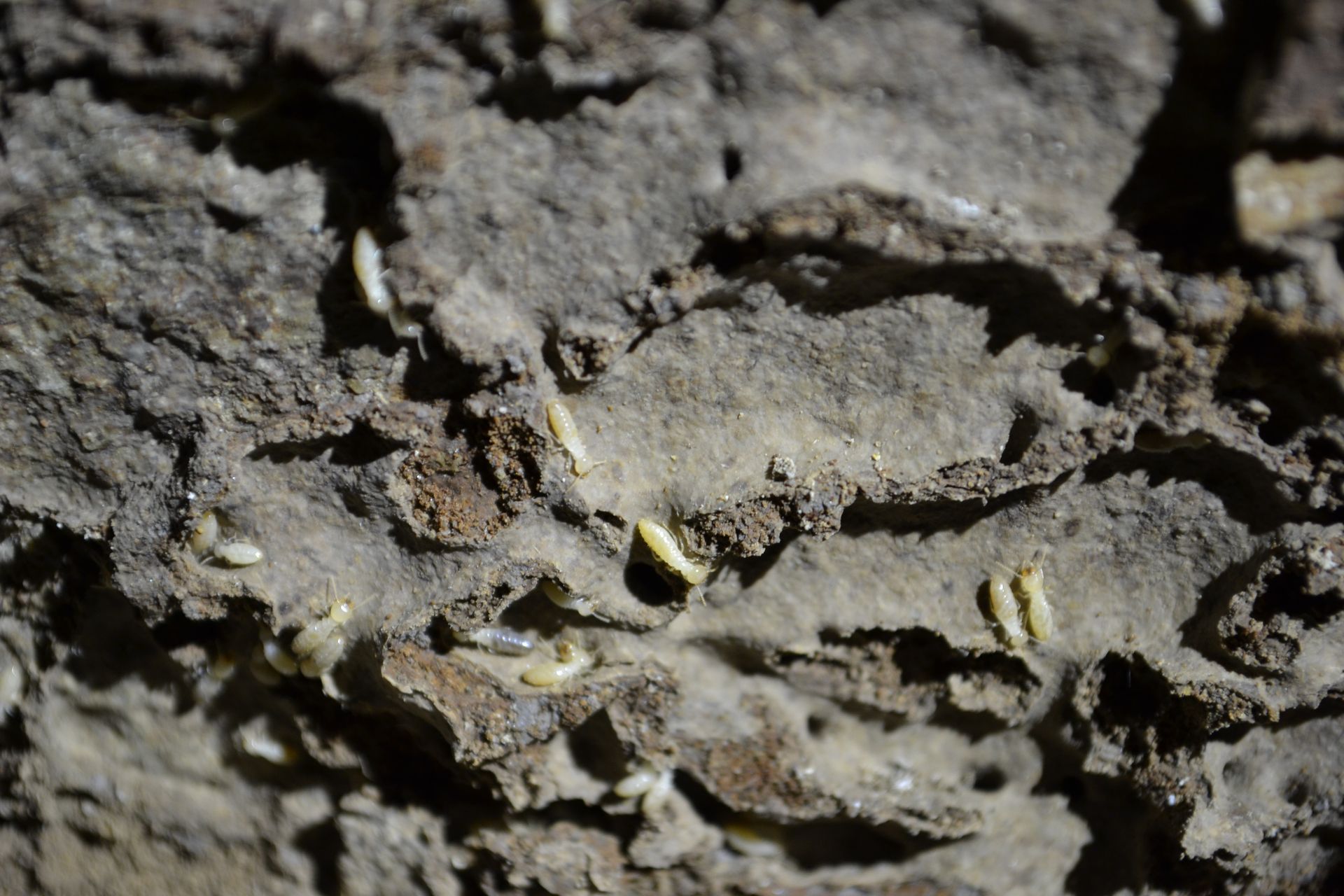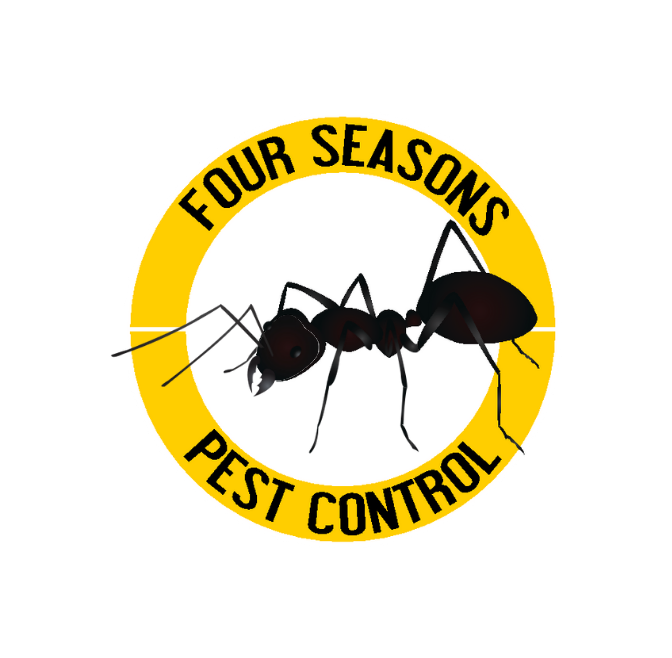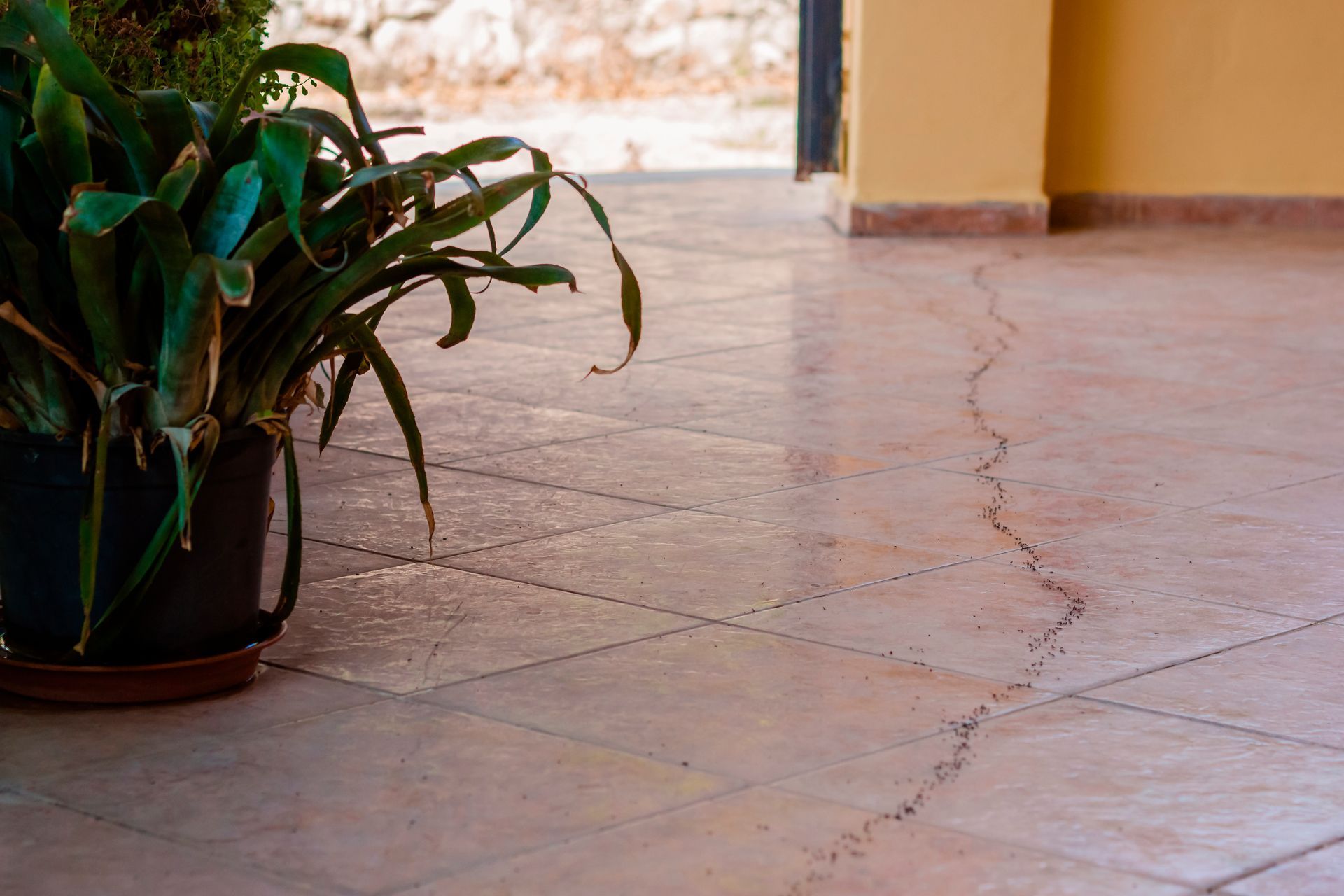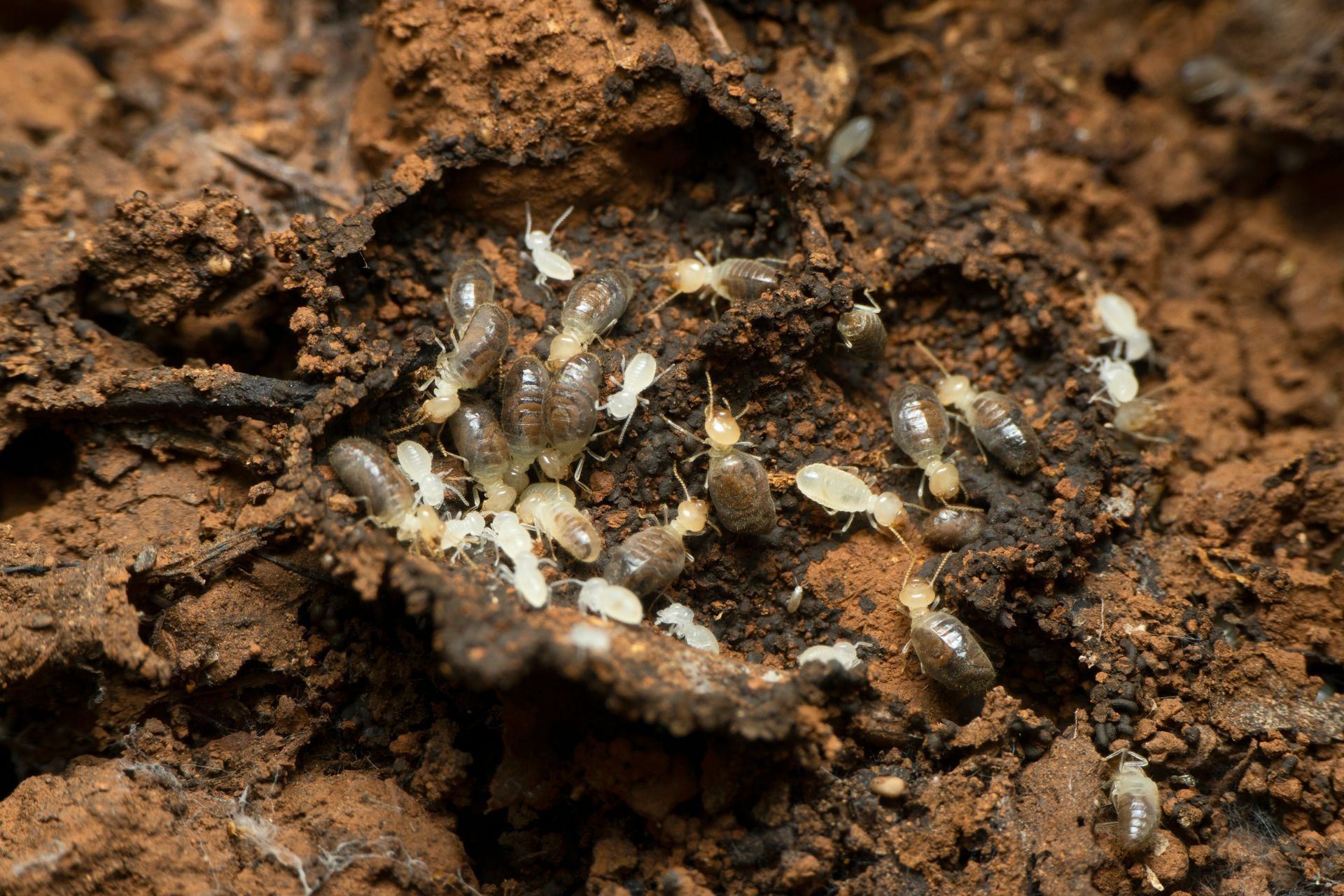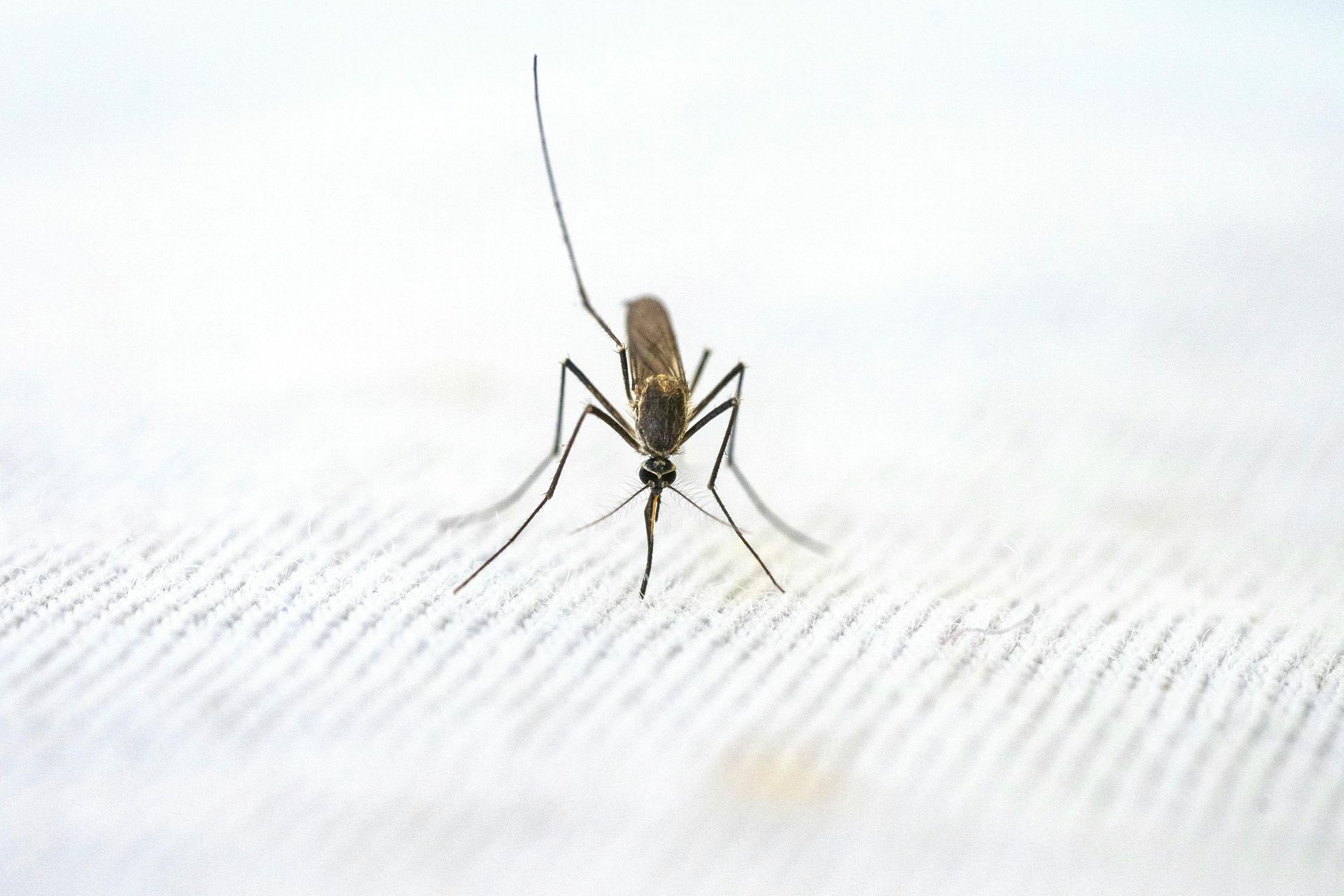How Long Does a Mosquito Live?
Welcome back, pest pals! Previously, we talked all about mosquito treatments. This time, let's go through the lifecycle and the potential diseases mosquitoes can carry.
North Carolina and Virginia host over 60 species of mosquitos. Our region sees the Asian tiger mosquito the most. In the mid-1980s, importers introduced Asian tiger mosquitos to America through used tires from Northern Asia.
inches long.
What Do Mosquitos Look Like?
First, we want you to be able to recognize an Asian tiger mosquito. Each of the four life stages has a distinct look that, once you are familiar with, you'll be able to pick them out easily. Only 7 to 10 days stand between the day a female lays her eggs and the emergence of the next generation in the mosquito population.
Stage 1: Mosquito Egg
In our region, mosquitos can overwinter for up to 8 months. Mosquitos lay their eggs just above the waterline in water-holding containers. If you see a patch of rice-like eggs, you've got the next generation of bloodsuckers waiting for the next rain.
Once the eggs are submerged in rainwater, they hatch into mosquito larvae. Mosquitoes need only about an eighth of an inch of water to complete the lifecycle, and sometimes, it can take a couple of submersions for the eggs to hatch.
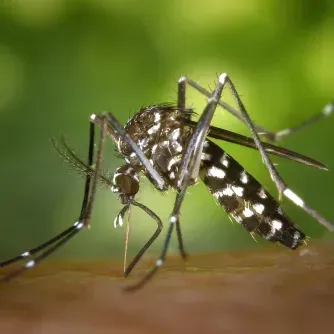
Stage 2: Mosquito Larvae
After hatching, mosquito larvae will continue to develop in water. Because they constantly wiggle, larvae are easy to spot in stagnant water.
In the larvae stage, mosquitos are active feeders. They feed on fine organic matter in the water, such as decaying leaves or pollen. While still in the larvae stage, they will come to the surface every now and then to breathe using their breathing siphon.
In as little as five days, the larvae are ready to transform into the last stage before becoming fully developed adults.
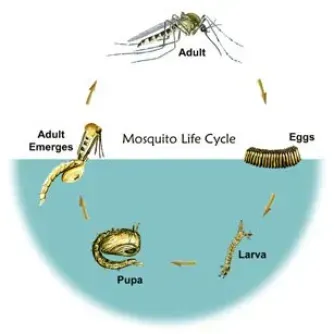
Stage 3: Mosquito Pupa
During the pupal stage, mosquitos no longer feed but are still extremely active. You can tell the pupa apart from the larvae because the pupa is darker in color and resembles a comma or a tiny shrimp. The pupa stage is the shortest in the mosquito lifecycle. Pupa are ready to emerge from the water as an adult, flying mosquitos in 2 to 3 days.
Stage 4: Adult Mosquito
Adult Asian tiger mosquitos
are among the most distinctive insects in our area. The easiest way to identify them is by the all-black body with strong white stripes on their legs and the single white or silver strip from the head down to the center of their back. Females are generally larger than their male counterparts.
As soon as females emerge from the water, they hunt for a blood meal, which is essential to egg production. The female uses the proteins in the blood to nourish her eggs before she finds a nice spot to start the cycle again. Every three to four days she is on the hunt again. Asian tiger mosquitos are considered domestic insects, which means they will only fly about 500 yards from their breeding sight.
How Long Do Mosquitos Live?
The mosquito lifespan is fairly short. On average, an adult mosquito only lives for 21 days. If you include the water stages the entire lifespan is about 31 days. One female will lay about 500 eggs in her life. In the USA, mosquitos are a public health issue because of their breeding habits and ability to spread diseases.
One small plus side is only half of the mosquito population spreads diseases. Male mosquitos don't bite and don't feed on blood. Males feed on plant juices and nectar rather than blood feeding.
What Diseases Do Asian Tiger Mosquitoes Carry?
The scary side of mosquitos, by far, is the dangerous and debilitating diseases they are able to spread to humans and animals. Professional mosquito control and personal protection measures are essential to stopping the spread of these ailments:
- Eastern equine encephalitis
- West Nile virus
- Yellow fever
- Zika
- Heartworms (dogs)
- Malaria
These diseases can cause lifelong discomfort or even death. Taking every possible precaution to protect yourself, your family, and your pets will reduce your risk of contracting a deadly mosquito-borne disease. Check out our previous post for ways you can prevent mosquitos from invading your outdoor space.
Mosquito control is a community effort that we take very seriously. If you want to discuss mosquito control options with one of our helpful staff, give us a call!


